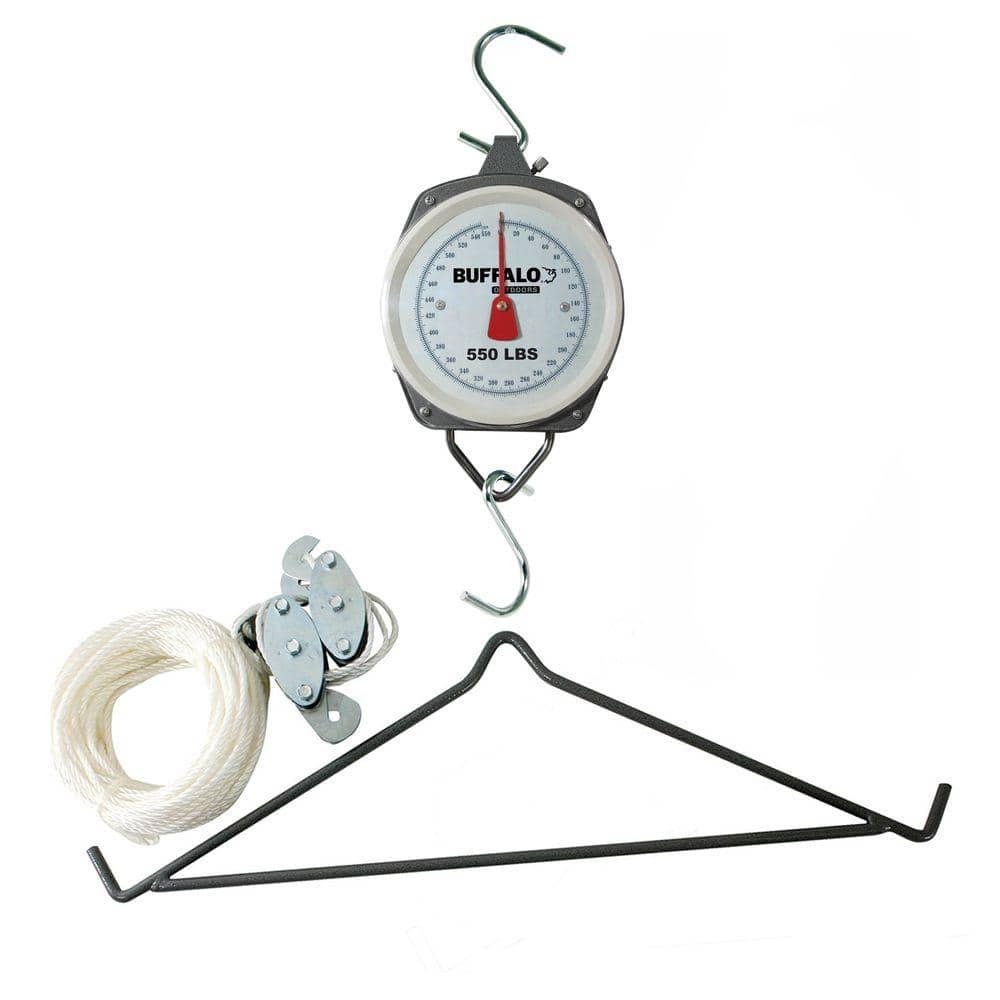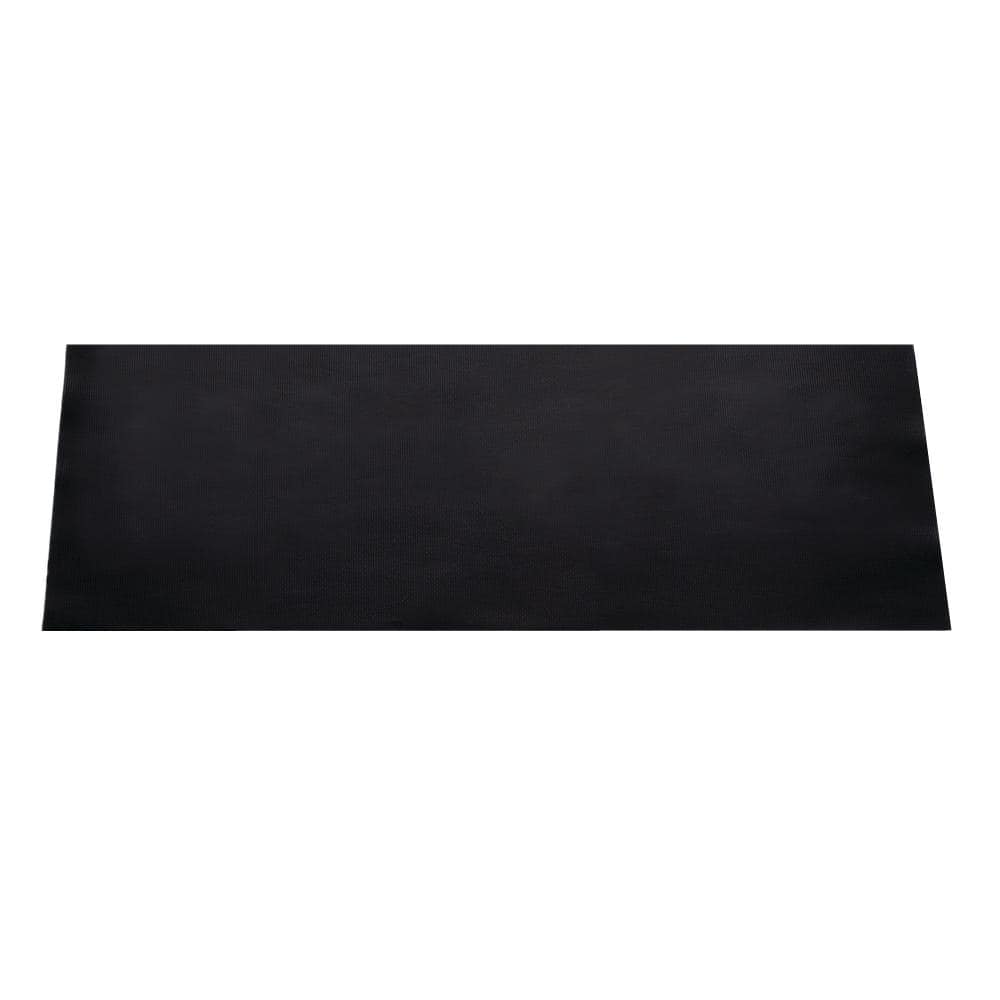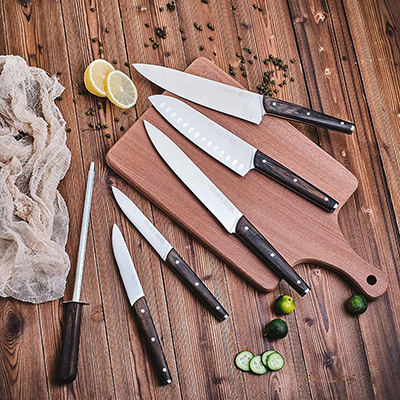The Best Measuring Cups and Spoons for Your Cooking Tasks

Last updated September 7, 2023
When it comes to baking, measurements are especially important. Arm yourself for success with a great set of tools. This guide covers liquid measuring cups, dry measuring cups and measuring spoons.
Table of Contents
Dry Measuring Cups vs. Liquid
Measuring Weight and Volume
Liquid Measuring Cups
Dry Measuring Cups
Measuring Spoons
Cleaning and Maintenance
Dry Measuring Cups vs. Liquid
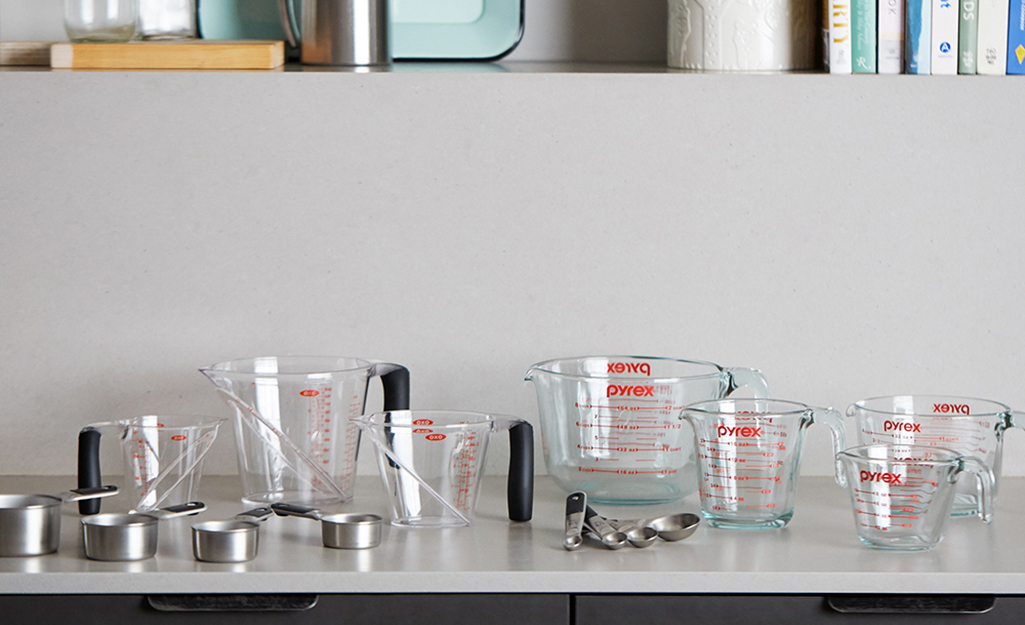
First, a quick primer on the function of dry measuring cups vs. liquid. The volume these tools measure is the same. A liquid cup is still equal to a dry cup. But you can't get by with a single set to cover all of your needs.
Liquid measuring cups are constructed to avoid spills. They help you pour effectively. It takes advantage of a viscous substances’ ability to level out. Dry measuring cups are for scooping. They get you an even fill with a surface scrape. To ensure you snag the best measuring cups, you’ll need to understand a bit more. Below we dive into each tools’ intricacies.
Measuring Weight and Volume
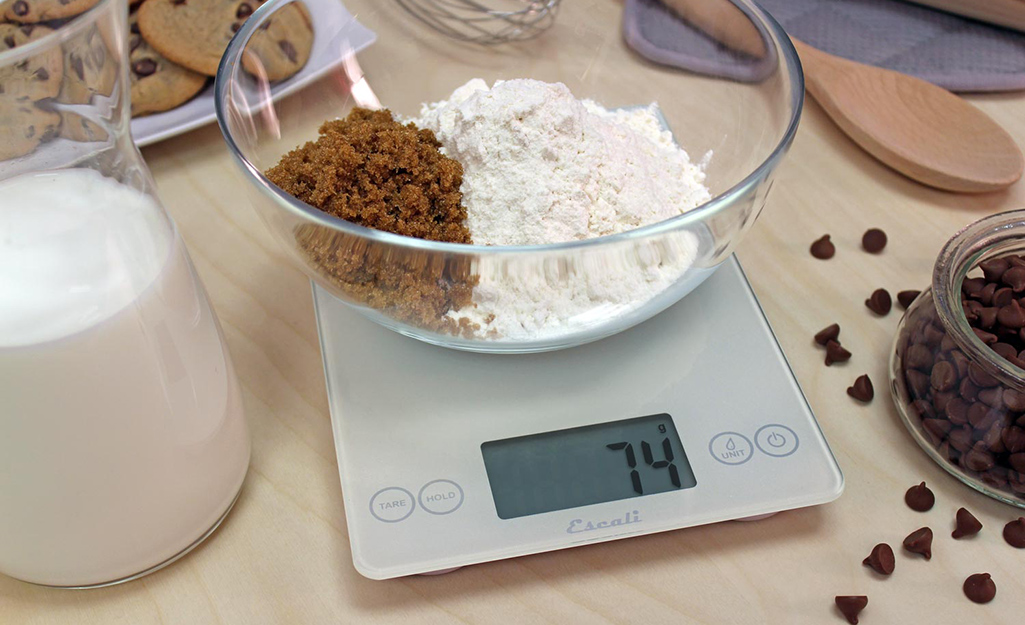
Measuring cups are historically flawed. Weight is a more accurate way to assess portion. Constructing a precise volume measurement tool is a tricky feat. Advanced bakers use a scale. They help to measure precise grams when executing a recipe.
Measuring volume is a little less reliable. This is because it does not take density into account. For example, take a look when measuring a cup of flour. Your measuring tool can vary by ounces depending on how tight you pack it. It'll change whether you’ve swept the top or sifted the flour. It can change even based on how you’ve filled the cup. Variation in ounces may seem like splitting hairs. But in baking, these deviations can make a difference.
Not everyone has enough space for an electric or dial kitchen scale. If you follow US recipes, instructions will list cup measurements over grams. Compared to a scale, the best measuring cups are a reliable option. But only if they are sized appropriately. Understanding their usage and keeping use consistent is important.
Liquid Measuring Cups
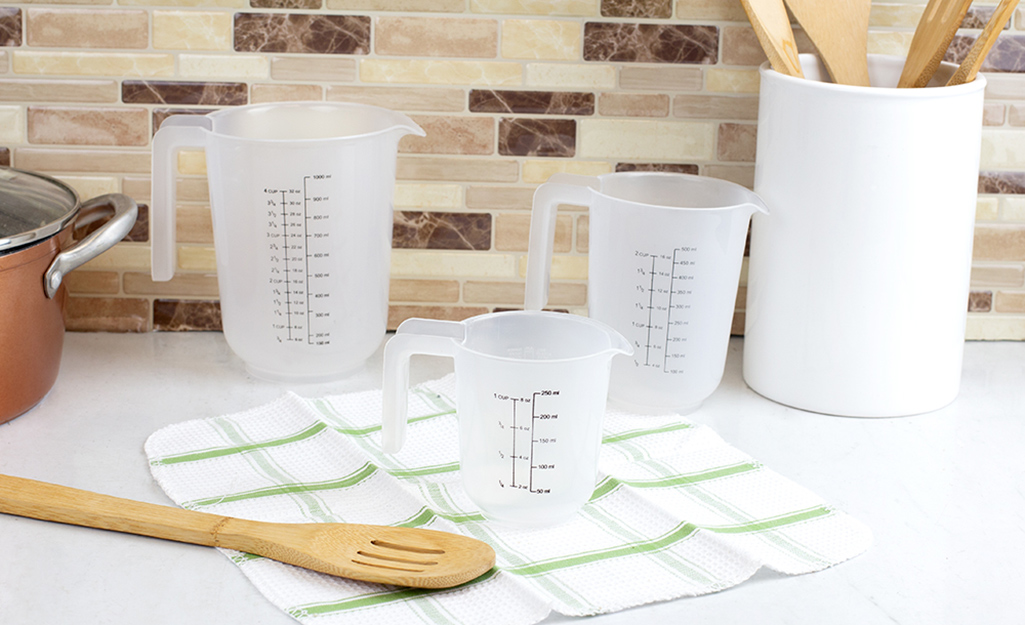
When picking a liquid measuring cup, identify one with clear visibility. Clear measuring cups are a natural go-to. Transparent glass or plastic is essential. This will allow you to observe the level to which you fill the glass. Don’t be shy. Get face down to the cup’s level to make sure your reading is accurate. Markings need to be clear and long-lasting, something that is aided by etching. Liquid measuring cups will have markings that end well below the top of the cup. This is to avoid spilling and inaccurate measurements.
Material:
- The material should be sturdy. Flimsy or BPA-ridden plastics should not find their way into your kitchen. You should keep in mind that plastic, which is porous, can stain and absorb flavors. So this variety does not take well to acidic things like tomato sauce. With plastic measuring cups, you run the risk of warping and melting. Be careful with handling hot liquids. No microwaving hot butter or other similar tasks.
- Glass is our favorite option for liquid measuring cups. Though glass is breakable, the best liquid glass measuring cups will be sturdy. You don’t have to worry about the weight of glass. These tools aren’t as large as some of your other cookware. Take mixing bowls, for example.
Tempered glass is the traditional choice for liquids. It can withstand different temperatures and not break from shock. - Clear silicone measuring cups are sturdier than other plastic options. They can stand up to heat and average wear and tear. But they can be a bit trickier to clean than glass. Ceramic is an available material as well. But be careful, as it's the most prone to breakage.
Sizes:
- Liquid measuring cups come in an array of sizes. You should stock your kitchen with a good set. Liquid measuring cup sets come with the following sizes: 1 cup, 2 cups, 4 cups and 8 cups. This variety will allow you to finish tasks with more accuracy. In addition to a breakdown of cup portion (1/8, 1/4, 1/3, 1/2), these vessels should display markings denoting ounces and milliliters. This will allow you to follow both American and global recipes. The best liquid measuring cups will have bold markings. They should be clear to read even when viewed through liquid.
Shape & Handles:
- Other features to consider are glass shape and handle characteristics. Look for a set that has bent handles. These will stack better than looped ones and offer greater security with lifting. Getting a solid hold is easier when a pair has a silicone handle. The best liquid measuring cups will have spouted lips that pour without spilling. Another shape factor to consider is width. A wider measuring cup will give you more steadiness and greater area to pour.
Dry Measuring Cups
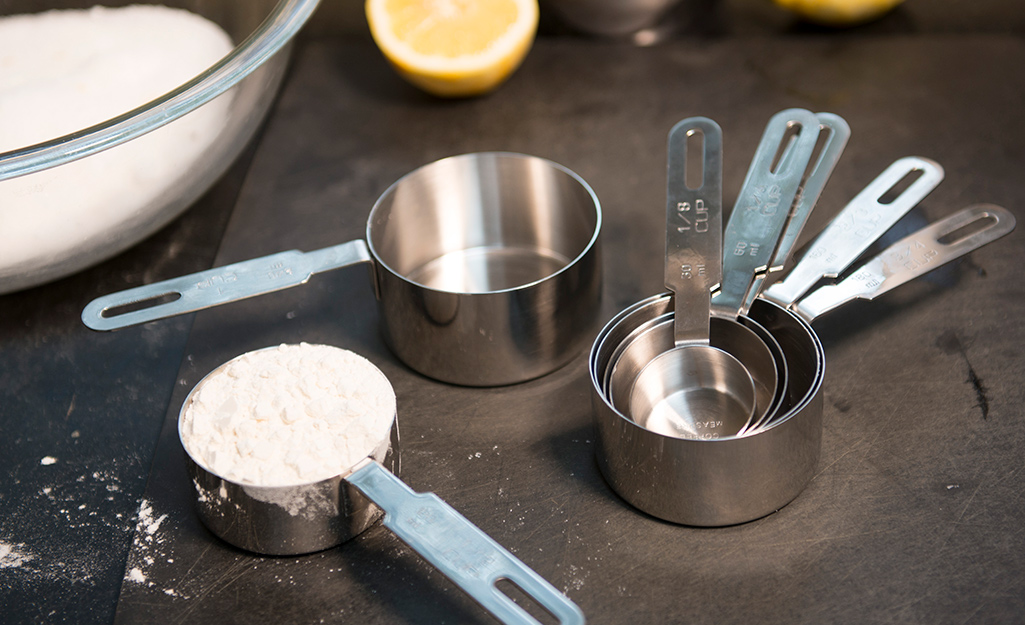
There are some key differences between dry and liquid measuring cups. Dry measuring cups do not need pouring ability or transparency.
Material:
- Look for wide, sturdy stainless steel or silicone measuring cups. Don't worry about plastic’s porous quality when dealing with dry products. The best stainless steel measuring cups are your most durable option. They are ideal for scooping and longevity.
- The best stainless steel measuring cups will be weighty. They should leave you confident they won't tip over when you’re pouring into them. A great test when selecting dry cups is to stand them up and see if they teeter. This is important with smaller measuring cups. They have less surface contact, meaning less assured steadiness. Silicone measuring cups tend to be lighter and should be tested for balance.
Sizes:
- A standard set includes 1/4 cup, 1/3 cup, 1/2 cup and 1 cup. Having a complete set that includes smaller sizes is important. The proper way to use a dry cup is to fill it to the brim and level off. This will ensure you are getting an exact measurement. Using a large dry measuring cup for all your needs is a flawed approach.
- Just like liquid measuring cups, get a set that has etched measurement marks. You’ll want to be able to read etches for years without worrying about fading. Look for a set that notes milliliters. This is to avoid having to make metric conversions.
Handles:
- Another important factor when approaching scooping is strength of handle. Stainless steel handles are mightier than plastic ones. Other handle features to think about are length and any gripping aids. We like shorter handles. These will give you greater control over the attached cup. They also don’t bend as easily as long handles.
- Grip aids like silicone covering and padding are also excellent features. They help you maintain a firm hold on your measuring cup. Another feature available these days is an embedded magnet or snap. These are to keep handles sticking to one another when you store them. Plastic measuring cups fall prey to getting stuck in a utensil drawer. So, we love this addition.
Measuring Spoons
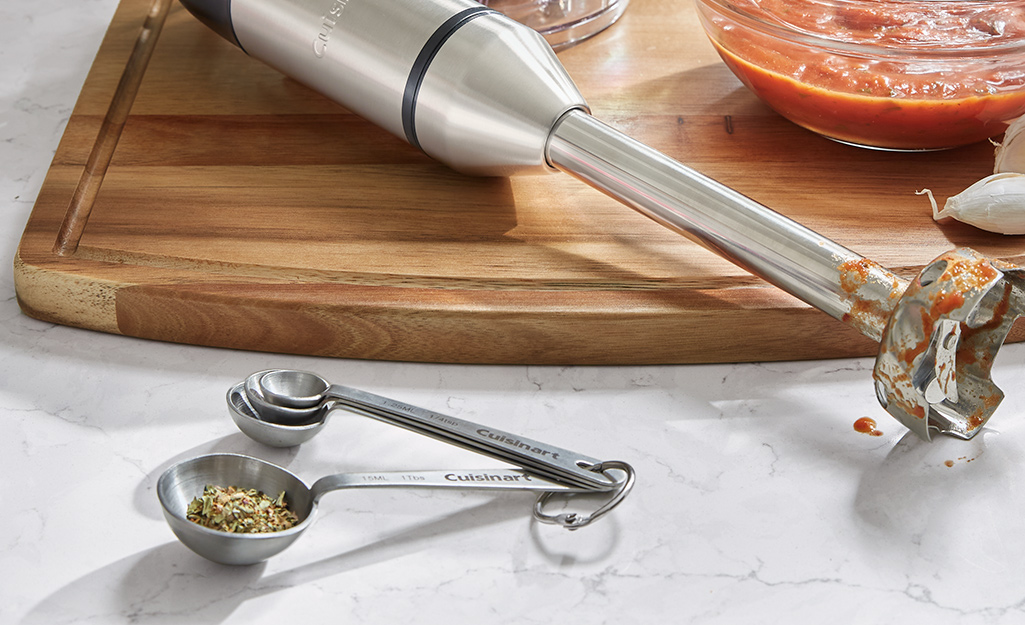
In addition to measuring cups, keep a set of measuring spoons on hand. Measuring spoons need to be accurate and easy to read. Measuring spoons are similar in function to a dry measuring cup. Measuring spoons are often used with liquids (think vanilla extract). With liquids, they are meant to be filled to the top. Yet, they are also often used to scoop dry ingredients. Scoop fully and then level it off. Because of this, many of the rules we’ve outlined above for the best dry measuring cups apply to measuring spoons.
Grippy handles and etched measurements are ideal for these. Stainless steel is your most durable material option. We love when both U.S. and metric measurements are on measuring spoons, but this is less common than with measuring cups. A set ought to include 1/4-teaspoon, 1/2-teaspoon, 1 teaspoon and 1 tablespoon. Inclusion of a 1/2-tablespoon is nice, but not a requirement. Helpful snaps or elements that keep storage in check are a must.
Cleaning and Maintenance
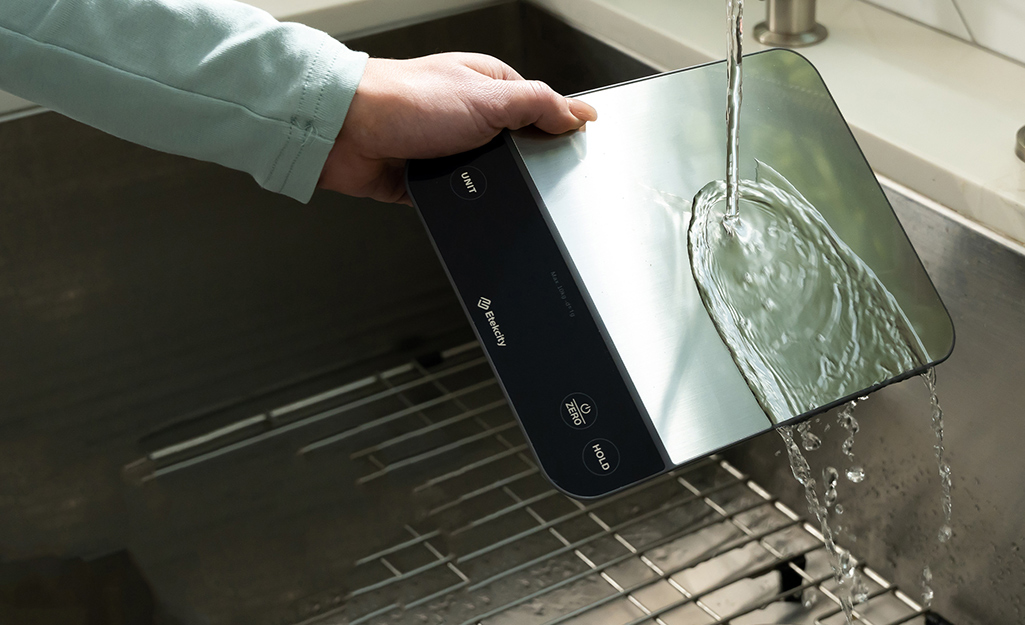
Almost all the best measuring cups will be dishwasher safe. Just remember that the dishwasher will fade markings more quickly than handwashing. Plastics are a bit trickier to clean sticky substances like honey out of. A hack that helps combat this is coating a cup with a nonstick spray before use. Works like a charm!
Looking for a measuring cup set to complete your kitchen? The Home Depot delivers online orders when and where you need them.
